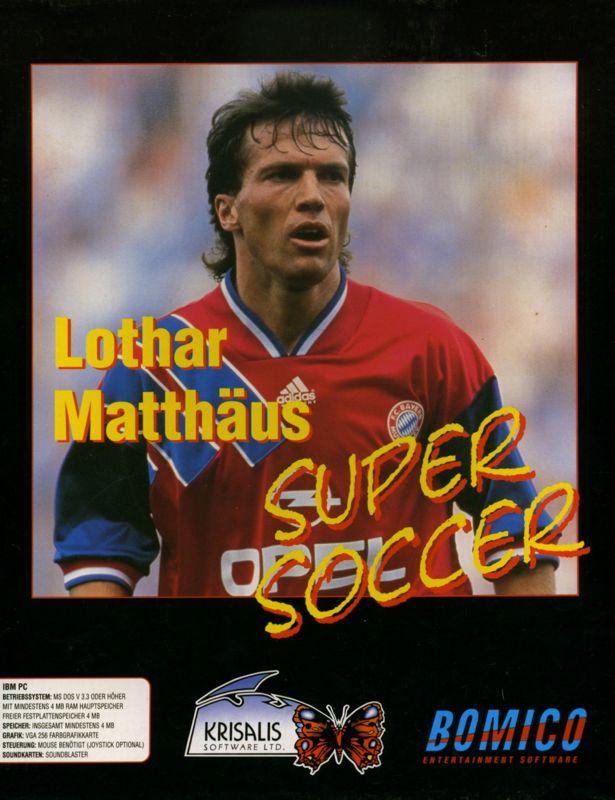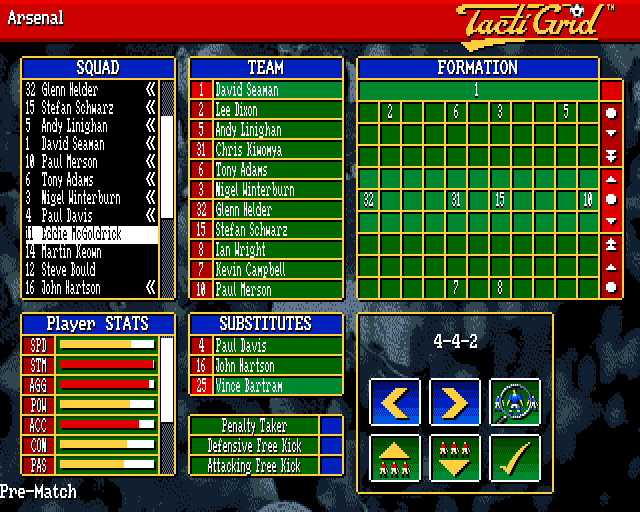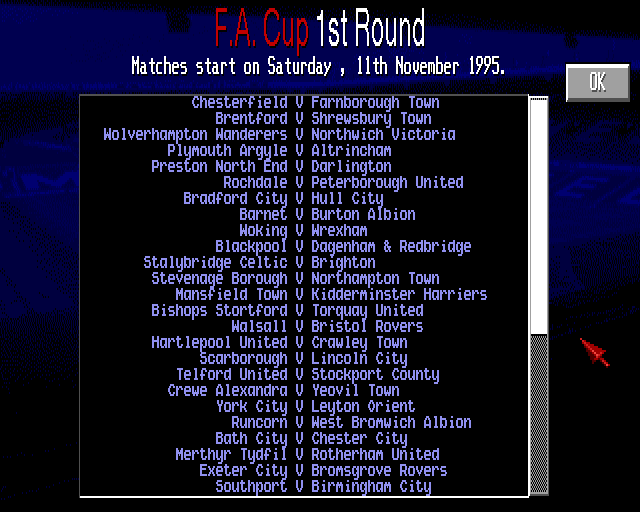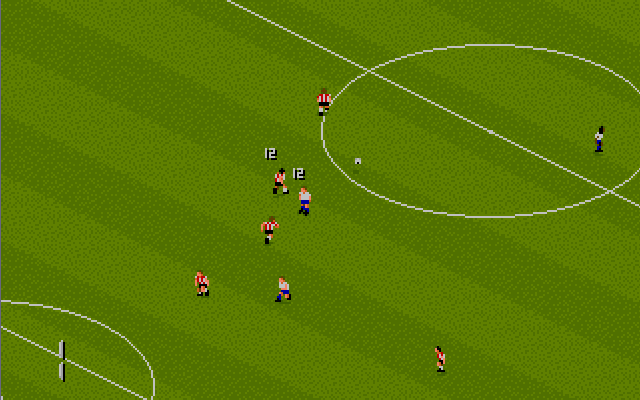Retro Replay Review
Gameplay
Manchester United: The Double delivers a fast-paced, overhead-view football experience that feels both familiar and refreshingly challenging. Drawing clear inspiration from classics like Kick Off, the controls emphasize precision over brute force, rewarding players who master short passing and timely tackling. At first, the loose ball control and quick player movements can feel unforgiving, but persistence and practice transform these initial frustrations into strategic depth.
A standout feature is the Tacti-Grid tactics editor, which elevates the gameplay from mere button mashing to a genuine managerial exercise. With this tool, you can assign specific routes for every player based on ball position, tweak individual skills, swap players between clubs, and even rename your squad. The ability to customize kits and rearrange divisions offers a surprising amount of league-wide control, giving the game longevity that many contemporaries lack.
Matches themselves are tense affairs where a single misplaced pass can be punished immediately. The two-button control scheme—one for passing and one for shooting—keeps inputs simple yet demands timing and spatial awareness. As you grow accustomed to the rhythm of play, you’ll find yourself executing slick one-twos, pressing opponents relentlessly, and unlocking goals with well-timed through balls.
For newcomers, the learning curve can be steep, but the satisfaction of finally breaking down a stubborn defense is immense. Whether you’re finessing a corner routine or orchestrating a counterattack, each successful move underlines the depth hidden beneath the game’s retro veneer. Football enthusiasts who appreciate skill-based challenges will find the gameplay here both rewarding and addictive.
Graphics
Visually, Manchester United: The Double embraces the 16-bit era’s charm, presenting crisp player sprites and a clear overhead pitch that never feels cluttered. While animations may appear blocky by today’s standards, the fluidity of movement stands out among its peers—players pivot, lunges for tackles look convincing, and the ball responds naturally to turf bounces.
The color palette leans heavily on Manchester United’s iconic red and white, with well-defined pitch markings and dynamic crowd hues adding atmosphere. Stadium backdrops are simple but effective, brimming with pixelated spectators whose occasional wave animations bring matchdays to life. Even the scoreboard graphics feel polished, displaying match time, scoreline, and substitutions clearly without obscuring on-field action.
One of the more understated graphical triumphs is the Tacti-Grid interface, which manages to convey extensive tactical data through a clean, intuitive grid layout. Icons representing player positions and movement arrows are easily distinguishable, and customizing appearances—right down to shirt numbers—feels surprisingly modern for a mid-’90s release.
Though it won’t compete with polygonal titles of later consoles, Manchester United: The Double’s art direction effectively balances clarity and personality. Fans of retro sports simulations will appreciate the game’s straightforward, no-frills aesthetic, which keeps the focus squarely on the pitch.
Story
Unlike narrative-driven football RPGs, Manchester United: The Double doesn’t weave an elaborate storyline. Instead, it celebrates the club’s historic 1993–94 “Double” triumph, when Sir Alex Ferguson’s side lifted both the Premier League and FA Cup. This real-life backdrop lends each match a sense of purpose: you’re not merely winning games—you’re reliving a legendary season.
The campaign mode loosely follows Manchester United’s fixture list, allowing you to recreate pivotal moments from that era. Beating rivals like Blackburn Rovers or overcoming FA Cup upsets against underdogs encapsulates the tension and glory of that memorable year. Though there are no cutscenes or spoken dialogue, the match-ups and evolving league tables provide their own kind of narrative momentum.
Beyond the core season, the freedom to edit squads and move clubs across divisions introduces a sandbox element. You can fabricate “what-if” scenarios—imagine United facing different opponents or a lower-division team embarking on a Cinderella run to silverware. This creative latitude transforms the game from a pure simulation into a personalized football drama.
Ultimately, the story emerges from your on-field achievements and tactical innovations. Scoring a last-minute winner at Old Trafford or stripping an opponent of the ball with a perfectly timed slide tackle writes its own small chapter in your virtual Double-winning saga.
Overall Experience
Manchester United: The Double is a compelling blend of arcade-style football and deep managerial customization. Despite its retro graphics, the core gameplay remains addictive, and the robust Tacti-Grid ensures that no two matches feel the same. Its steep learning curve may deter casual players, but those willing to persevere will find a richly rewarding experience.
For fans of Manchester United, the game’s focus on the club’s celebrated 1993–94 season injects every match with historical significance. Even if you’re not a die-hard Red Devils supporter, the intuitive overhead mechanics and extensive editing tools deliver a football simulation that stands out among early ’90s releases.
While modern football titles boast hyper-realistic visuals and dozens of licensed leagues, The Double’s nostalgia factor and singular focus offer charm that contemporary games sometimes lack. It’s a title built by football fans for football fans—an era-capsule that still resonates thanks to its gameplay depth and customization freedom.
Whether you’re exploring the Tacti-Grid for the first time, replaying the Double campaign, or crafting your own managerial fantasy, Manchester United: The Double provides an engaging, strategic, and historically infused football experience that remains satisfying decades after its initial release.
 Retro Replay Retro Replay gaming reviews, news, emulation, geek stuff and more!
Retro Replay Retro Replay gaming reviews, news, emulation, geek stuff and more!









Reviews
There are no reviews yet.